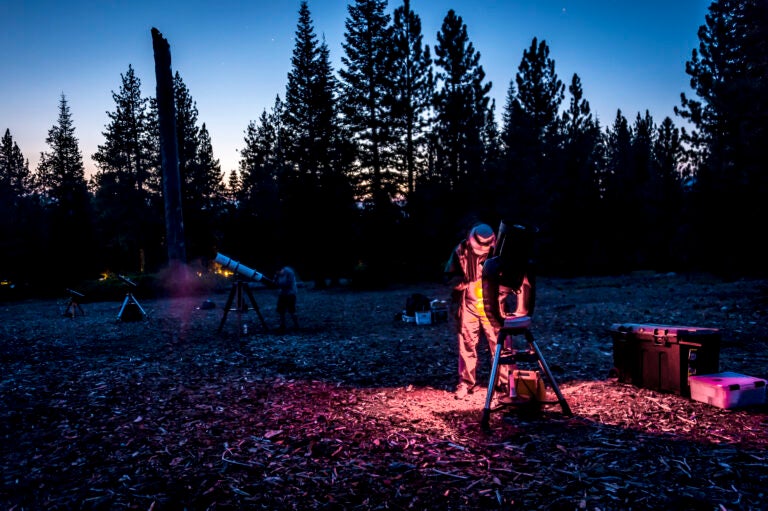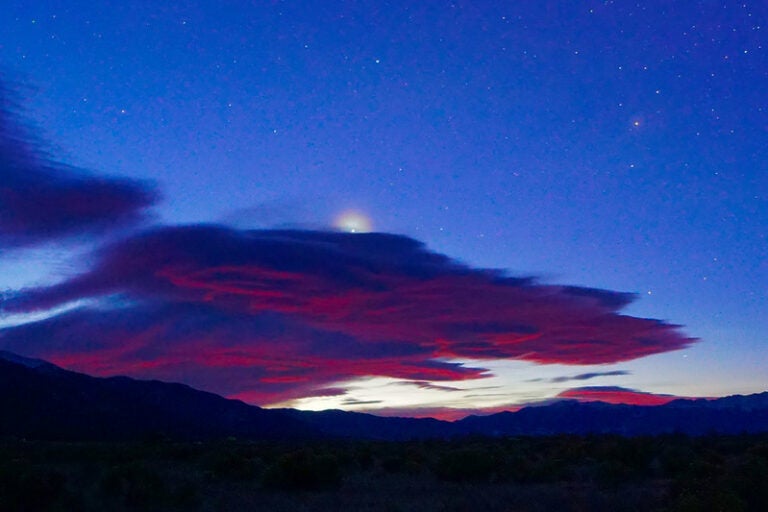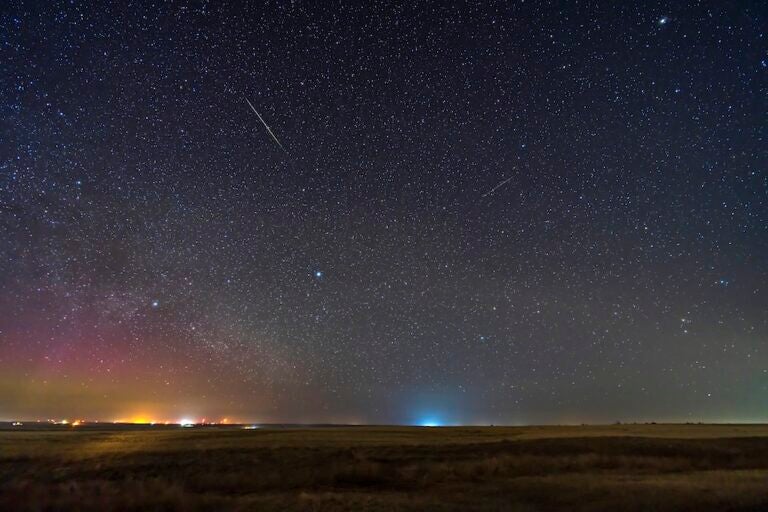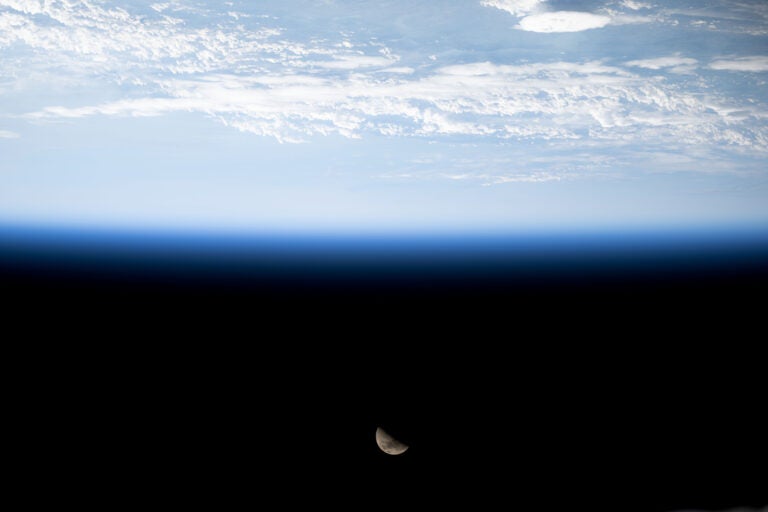Dallas, Oregon, might not be on many people’s radar. But it’s not short on lovers of the sky. Just down the road from the farm where the Chinese team stayed, a local man had built his own observatory into his house. And he’s surely not alone.
A kind invitation
When I wrote a story earlier this year about this same Chinese astronomy team, which would travel 7,000 miles to observe the Great American Solar Eclipse, I didn’t expect any follow-ups or readers’ responses. The team later told me, however, the story netted many readers. And in the meantime, a library manager from Dallas, Oregon, invited them to Dallas, instead of their original destination of Lincoln City, for a better chance of clear skies.
In general, Dallas has less cloud cover than Lincoln City. The latter is near the coast, which makes it more likely to have a marine layer of clouds, said Mark Johnson, manager of the Dallas Public Library. Dallas, 40 miles from Lincoln City, is less affected by the sea.
Johnson is also the guy who contacted the Chinese team after reading my story. When we talked on the phone several weeks ago, he told me his town would close the main street and many lecturers and events had been scheduled.
“It will be a large party for three days,” he said. The library itself also planned to close from 10 to 12, because staff members would want to experience totality.
Who wouldn’t?
It’s been 38 years since the last eclipse hit US soil. Dr. Deborah Johnson, who hosted the Chinese team and watched the eclipse on her farm with them, was in New Mexico in 1979. She was in medical school at the time.
“There was no commercial sales of eclipse glasses,” she said, “so I made a pinhole camera.” The hole in the paper is like a lens, and you can see the Sun’s image on another piece of paper behind it. Dr. Johnson drew a diagram on the kitchen table as she explained this eclipse memory to me.
As for Mark Johnson himself, he was a history major. But he loves reading science articles like the ones on Astronomy.com. Growing up, he’s shared a love for science with his father, who studied physics and chemistry.
Mark Johnson helped to settle the 17-people team of Chinese astronomers — coming from Peking University, University of Chinese Academy of Sciences Yunnan Observatory, and Sichuan University of Science and Engineering — in Dr. Johnson’s 14-acre farm 20 miles west of Salem. It’s a quiet spot away from the crowds, an undisturbed place for scientific observation.
It’s a tricky business to observe the Sun, not to mention one only had 117 seconds of totality in Dallas, Oregon. Once the equipment had been set up, no one could touch or move any part. The observation site was circled with many ropes, somewhat akin to a crime scene. The astronomers had to set and adjust the telescopes’ exposure times, sometimes on the spot. And they couldn’t open the lids too late or too early — even the Sun’s last remaining crest of light could destroy optics and make all efforts futile.
Dr. Zhongquan Qu, a professor of solar physics at the University of Chinese Academy of Sciences Yunnan Observatory, and fellow researchers brought five different telescopes to maximize the scientific output from this fleeting darkness. Among them, four were for various kinds of observations of the corona, including the FASOT telescope to study polarization. The fifth telescope measured the diameter of the Sun, which actually changes over time. When compared with other researchers’ results, the team’s data would be used to study the evolution of our star, said Dr. Qu.
The team spent five days in Dallas preparing for the big moment. When I arrived late on Sunday, most of their equipment had been assembled, tested, adjusted, and re-tested. They had even caught a potential problem and solved the issue an hour before the eclipse started. There’s no room for imperfection when you have less than two minutes to collect data.
It was a sunny day, pretty hot even before 9 o’clock. Once the Sun began to slowly lose its perfect circular shape, people were calmer than I expected. Nothing was dramatically different in the beginning. It is going to be a long wait, I said to myself.
But before I realized it, the eclipsing Sun was casting magic through the leaves. It’s like millions of mini crescent Moons all going fast backward through their phases. Soon, even the area between one’s curling fingers became tiny bright crescents amid the shadows.
Then the countdown started at 30 minutes.
The sky darkened. The temperature dropped. A donkey nearby grew sleepy. Men became restless and excited. The countdown was in seconds instead of minutes.
Suddenly, Dr. Qu shouted “Baily’s beads!” It was a signal for everyone’s adrenaline to rush.
I couldn’t describe what exactly happened next — it’s all too unreal and too fast. Neither could Yuna, a three-year-old girl at the scene. When I asked her afterwards, she said, “It’s the wake-up time again.”
Nobody thought they’d had enough. It all seemed too short. Luckily for the Chinese team, they collected most data they planned to gather, including the diameter of the Sun and the strength of the coronal spectral lines.
And even before they could fly back to Beijing, some researchers are starting to analyze the graphs and numbers already.














